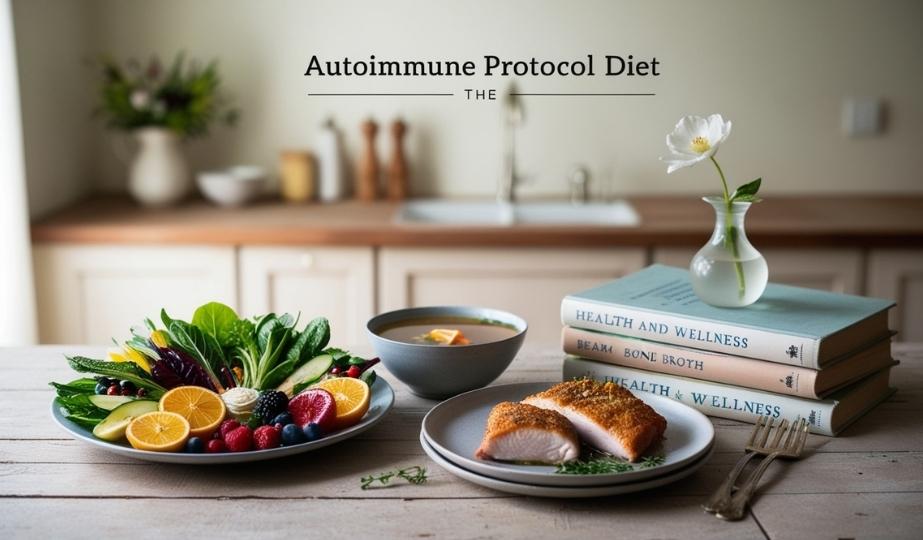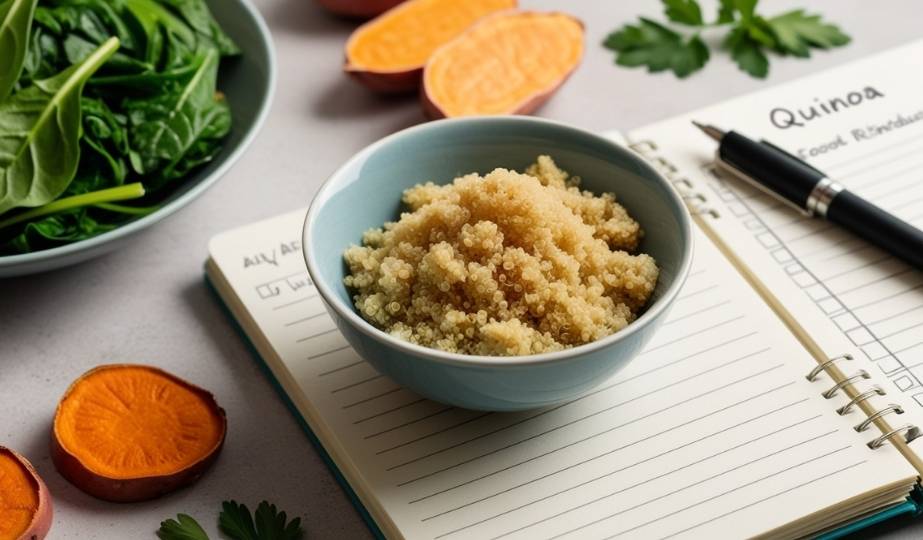The Autoimmune Protocol (AIP) diet is a therapeutic approach designed to help individuals manage autoimmune diseases by reducing inflammation, improving gut health, and promoting overall wellness.
If you’ve been diagnosed with an autoimmune condition, you may have heard about the AIP diet and its potential to alleviate symptoms. Naturally, one of the most common questions that arises is whether certain foods—such as quinoa—are allowed on this diet.
Quinoa is often regarded as a nutrient-rich superfood, but is it compatible with the AIP diet?

In this article, we’ll explore whether quinoa fits within the guidelines of the autoimmune protocol diet, take a closer look at its nutritional profile, and discuss its potential impact on autoimmune symptoms.
We’ll also share practical tips on quinoa alternatives and strategies for managing autoimmune conditions through dietary choices.
What is the Autoimmune Protocol?
The Autoimmune Protocol (AIP) diet is a specialized version of the Paleo diet designed to eliminate foods that may trigger inflammation and immune system responses, which can worsen autoimmune conditions. The AIP diet follows two distinct phases:
1. Elimination Phase
In this phase, you remove potentially problematic foods from your diet, including grains, legumes, dairy, processed foods, nightshades, and food additives. The goal is to give your body time to heal, reduce inflammation, and reset the immune system.
2. Reintroduction Phase
After a period of strict elimination, foods are gradually reintroduced one by one. This process helps identify specific food intolerances and sensitivities, allowing individuals to determine which foods may trigger autoimmune symptoms.
The AIP diet emphasizes nutrient-dense foods that promote gut healing and reduce inflammation. These include:
- Meats (especially organ meats)
- Fish and seafood
- Fruits and vegetables
- Healthy fats (such as olive oil, coconut oil, and avocado oil)
- Certain herbs and spices
The focus on whole, unprocessed foods provides essential nutrients while supporting immune health and gut repair.
Why Quinoa Might Not Be Allowed on the AIP Diet
Before examining whether quinoa fits into the AIP diet, it’s important to understand why it is generally excluded during the elimination phase.
Quinoa: A Pseudo-Grain
Quinoa is technically a seed, not a grain, but it is often classified as a pseudo-grain because it shares similar culinary uses and nutritional characteristics with grains.
Known as a “superfood,” quinoa is highly regarded for its nutrient profile. It is:
- High in protein and one of the few plant-based foods that provides all nine essential amino acids.
- Rich in fiber, antioxidants, magnesium, and iron, contributing to overall health and wellness.
Despite its nutritional benefits, quinoa may pose challenges for individuals with autoimmune diseases—particularly during the elimination phase of the AIP diet.
Reasons Quinoa Is Excluded from the AIP Diet
1. Anti-Nutrients in Quinoa
Quinoa contains compounds known as lectins and saponins, which are classified as anti-nutrients.
- Lectins: These proteins can interfere with nutrient absorption, irritate the gut lining, and potentially trigger inflammation—especially in individuals with autoimmune diseases or leaky gut syndrome.
- Saponins: Found on the outer coating of quinoa seeds, these compounds may be toxic in large amounts and can contribute to digestive irritation.
Because the AIP diet is designed to eliminate foods that may disrupt gut health and fuel inflammation, quinoa’s anti-nutrient content makes it unsuitable during the elimination phase.
2. Impact on Gut Health
The AIP diet prioritizes gut healing, particularly for individuals with gut-related autoimmune conditions such as Crohn’s disease, ulcerative colitis, and irritable bowel syndrome (IBS).
While quinoa’s fiber content can support digestion for some, it may cause bloating, gas, and discomfort in those with compromised gut health or a weakened intestinal lining.
The elimination phase aims to minimize gut irritation, making quinoa a potentially problematic food that is best avoided until gut health improves.
3. Quinoa as a Potential Inflammatory Food
Although quinoa is often considered an anti-inflammatory food in many diets, it may still trigger inflammation in individuals with autoimmune conditions.
The immune response to quinoa can vary depending on individual sensitivities, particularly to its lectins and saponins.
Since autoimmune diseases are closely tied to immune system dysfunction and chronic inflammation, eliminating foods with even a slight potential to provoke symptoms is a key focus of the AIP diet.
Quinoa During the Reintroduction Phase
Although quinoa is typically excluded during the elimination phase of the Autoimmune Protocol (AIP) diet, it may be reintroduced during the reintroduction phase to test your body’s tolerance.
The reintroduction phase is designed to help you identify food triggers and determine which foods your body can tolerate. If you’re considering adding quinoa back into your diet, here’s how to approach it:
1. Slowly Reintroduce Quinoa
Once you’ve successfully completed the elimination phase and feel ready to reintroduce quinoa, start with a small portion of cooked quinoa.
Introduce foods one at a time to monitor how your body reacts. A small serving allows you to check for symptoms such as digestive discomfort, bloating, or skin flare-ups without overwhelming your system.
2. Monitor Symptoms Carefully
After eating quinoa, pay close attention to any changes in your body. Common symptoms to watch for include:
- Joint pain or swelling
- Digestive issues (bloating, constipation, or diarrhea)
- Skin reactions (rashes, acne, or redness)
- Fatigue or brain fog
- Headaches or migraines
If any of these symptoms occur, it may be best to eliminate quinoa from your diet again.
3. Wait Before Testing Other Foods
Allow 3–4 days before reintroducing another food. This waiting period helps you accurately assess whether quinoa caused any reactions.
If quinoa is well-tolerated, you can gradually incorporate it into your meals. However, if it triggers symptoms, it’s best to continue avoiding it and focus on AIP-approved foods.
AIP-Friendly Alternatives to Quinoa
If quinoa doesn’t work for you—or you prefer to avoid it—there are plenty of nutrient-dense, AIP-friendly foods to enjoy. Here are some excellent substitutes:
1. Sweet Potatoes
Sweet potatoes are a versatile and nutrient-rich carbohydrate source allowed on the AIP diet.
- High in fiber, vitamins A and C, and potassium
- Naturally anti-inflammatory and easy to digest
They can be roasted, mashed, or added to soups and casseroles, making them a satisfying alternative to quinoa.
2. Root Vegetables
Root vegetables such as carrots, parsnips, beets, and turnips are excellent choices.
- Packed with vitamins, minerals, and antioxidants
- Rich in B-vitamins, potassium, and magnesium
These vegetables are gut-friendly and can be roasted, mashed, or blended into soups for a hearty meal.
3. Cauliflower Rice
For a grain-like texture, cauliflower rice is a fantastic substitute.
- Low in carbs but high in fiber, vitamins C and K, and antioxidants
- Easy to make by pulsing cauliflower florets in a food processor
Sauté cauliflower rice with AIP-friendly oils and seasonings for a delicious and versatile side dish.
4. Zucchini Noodles (Zoodles)
Zoodles are a low-carb, nutrient-dense option that pairs well with sauces and proteins.
- Rich in vitamins A and C and easy to digest
- Great for salads, stir-fries, and pasta substitutes
Zucchini noodles add variety to your meals while keeping them AIP-compliant.
5. Fermented Foods
Fermented foods like sauerkraut, kimchi, and kombucha are excellent for gut health.
- Provide probiotics that support digestive health
- Help balance gut bacteria and reduce inflammation
These foods are AIP-approved and can add flavor and variety to your diet while promoting gut healing.
Managing Autoimmune Symptoms with the AIP Diet
The AIP diet helps manage autoimmune conditions by eliminating inflammatory foods and focusing on nutrient-dense options that support healing. Key strategies include:
1. Eliminating Inflammatory Foods
Remove foods like grains, dairy, legumes, nightshades, and processed foods that can worsen inflammation and autoimmune symptoms.
2. Prioritizing Whole Foods
Focus on lean meats, fatty fish, vegetables, fruits, and healthy fats to reduce inflammation, promote gut health, and boost immune function.
3. Supporting Gut Healing
The elimination phase emphasizes gut-healing foods like bone broth, collagen, and fermented foods to repair the intestinal lining and reduce permeability.
4. Reintroducing Foods Gradually
The reintroduction phase helps pinpoint food triggers by testing one food at a time, allowing long-term customization of your diet based on your body’s needs.
My Opinion
Quinoa is a nutrient-dense food that offers several health benefits, but it is not permitted during the elimination phase of the AIP diet.
This restriction is due to quinoa’s anti-nutrient content, including lectins and saponins, which may irritate the gut and trigger inflammation in individuals with autoimmune conditions.
However, quinoa may be reintroduced during the reintroduction phase if symptoms are under control. Those who tolerate quinoa well can enjoy its nutritional benefits, but others may need to continue avoiding it.
If quinoa isn’t suitable for your body, there are plenty of AIP-friendly alternatives like sweet potatoes, root vegetables, cauliflower rice, and zucchini noodles to help you maintain a balanced, healing diet.
By following the AIP diet, focusing on whole, nutrient-dense foods, and paying attention to how your body responds, you can better manage autoimmune symptoms and promote long-term health.








GIPHY App Key not set. Please check settings